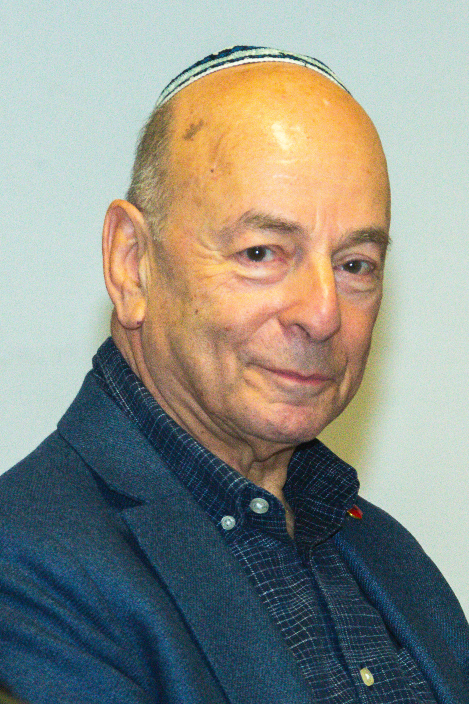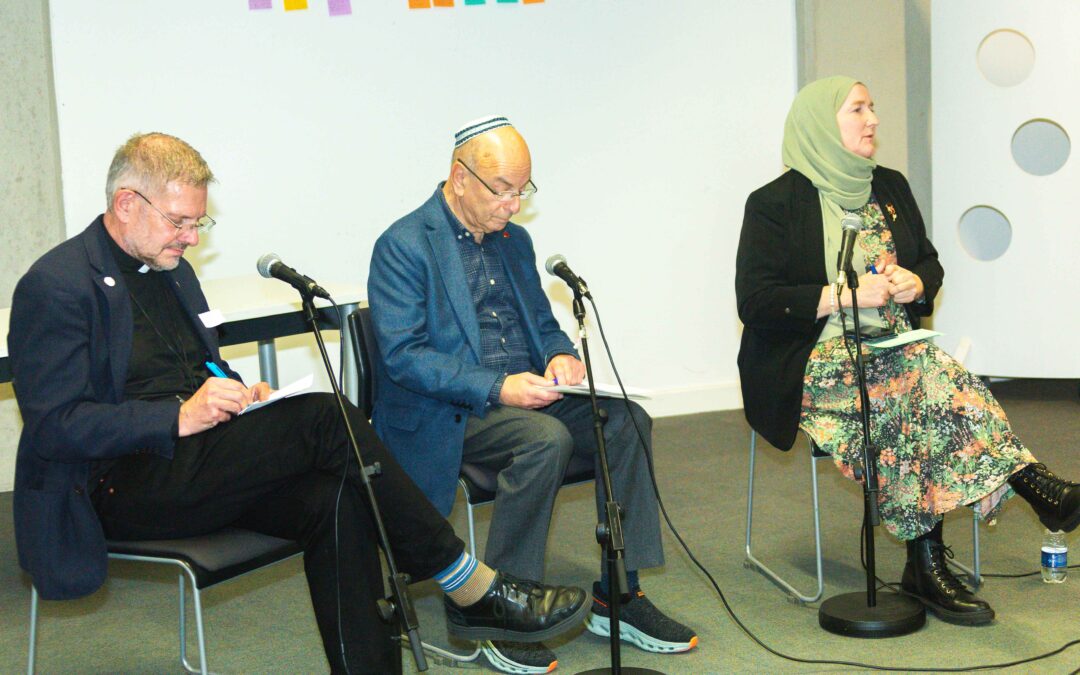
Vivian Wineman, Trustee of URI UK, offers an insight into the relevance of Inter Faith Week within the context of current conflicts in the Middle East.
The current war in the Middle East, in addition to causing enormous damage to life and property in Gaza and Lebanon, has also dealt a huge blow to relations of trust between Jews and Palestinians in Israel and the Palestinian territories.
A further secondary effect has been the damage to inter faith relations between religious communities, in the diaspora in general, and the UK in particular. Religious leaders, who were once devotees of Inter faith work, are now refusing to share platforms with their counterparts in other faiths because of their stand over the war in the Middle East.
In a sense, Jewish communities in the diaspora are further collateral damage caused by the war. It is most fortunate, therefore, that the week beginning November 10 th was designated as Inter Faith Week. This institution, which was first celebrated in 2009, aims to bring all faiths together. I was fortunate enough to be able to attend
an event as part of this week in Coventry.
It was appropriate that the event was held there. Coventry and its cathedral boast a rich history, but its most memorable chapter was written in World War II. On 14th November 1940 Germany launched what was to be its most concentrated attack on a British city in World War II. Hitler hoped this would bludgeon the British into settling for peace. Nearly 500 bombers, drawn from airfields all over Europe, dropped 500 tons of high explosive, 30,000 incendiaries and 50 landmines over the city. The damage caused was massive.
As well as the cathedral, 43,000 homes and numerous public buildings were destroyed. The official death toll was 554, but the real toll must have been higher, with many missing people not found under the rubble. The next day was as hot as spring, but there was darkness at noon because of the remaining smoke. It rose 6,000 feet, and the destruction could be smelt by the bombers flying above the city. The city was traumatised, with young children trying to burrow through solid walls to escape the terror. The raid even gave rise to a new word in German: Coventrieren ‘to raze a city. King George VI was said to have wept when he stood in the ruins of the Cathedral.
The rebuilding of the Cathedral symbolised recovery after the war. The architect Sir Basil Spence insisted that the ruins of the old cathedral should remain and that the new modernist place of worship should be raised up among them. But the building is appropriate in another way. Early on it was decided that the city of Coventry should be twinned with other devastated cities.
The first city chosen was Volgograd, better known under its previous name of Stalingrad – the site of the battle, seen as the turning point of the war. Coventry Council could have left it at that. The Germans had started the war and initiated the idea of terror bombing. The war is generally seen as a struggle against a monstrously evil regime a clear example of good against evil. But they did not. In 1947 it was decided to twin with Kiel a German city which suffered greatly from allied bombing in the war. In 1956 it was twinned with Dresden itself the victim of a massive bombing raid in February 1945. The message sent out was one of reconciliation. Cities symbols of the greatest suffering inflicted during this epic conflict articulating their desire, to put the suffering behind them, and to live in peace in the future.
There could be no more appropriate message for Inter Faith Week this year. The recent problems, that have arisen in the field, derive not from different doctrines espoused by the faiths. The most sensitive aspect of inter faith is the relationship between Judaism and Islam but these religions with their uncompromising monotheism, their dietary laws, their insistence on circumcision, and their concept of the unity of all believers, have much more in common with each other than either of them have with Christianity, It is not that practitioners of one faith regard the followers of the other as immoral or heretical. Rather it derives from a failure to recognise other narratives. Both groups have a strong , not unjustified sense of victimhood. This sense often militates against dialogue. The message of Coventry and of inter faith work generally is that one can hold on to the truth of one’s own narrative and feel one’s own loss yet recognise another person’s narrative and understand their similar feelings. We clearly have a long way to go but the meeting in Coventry was an encouraging start.

